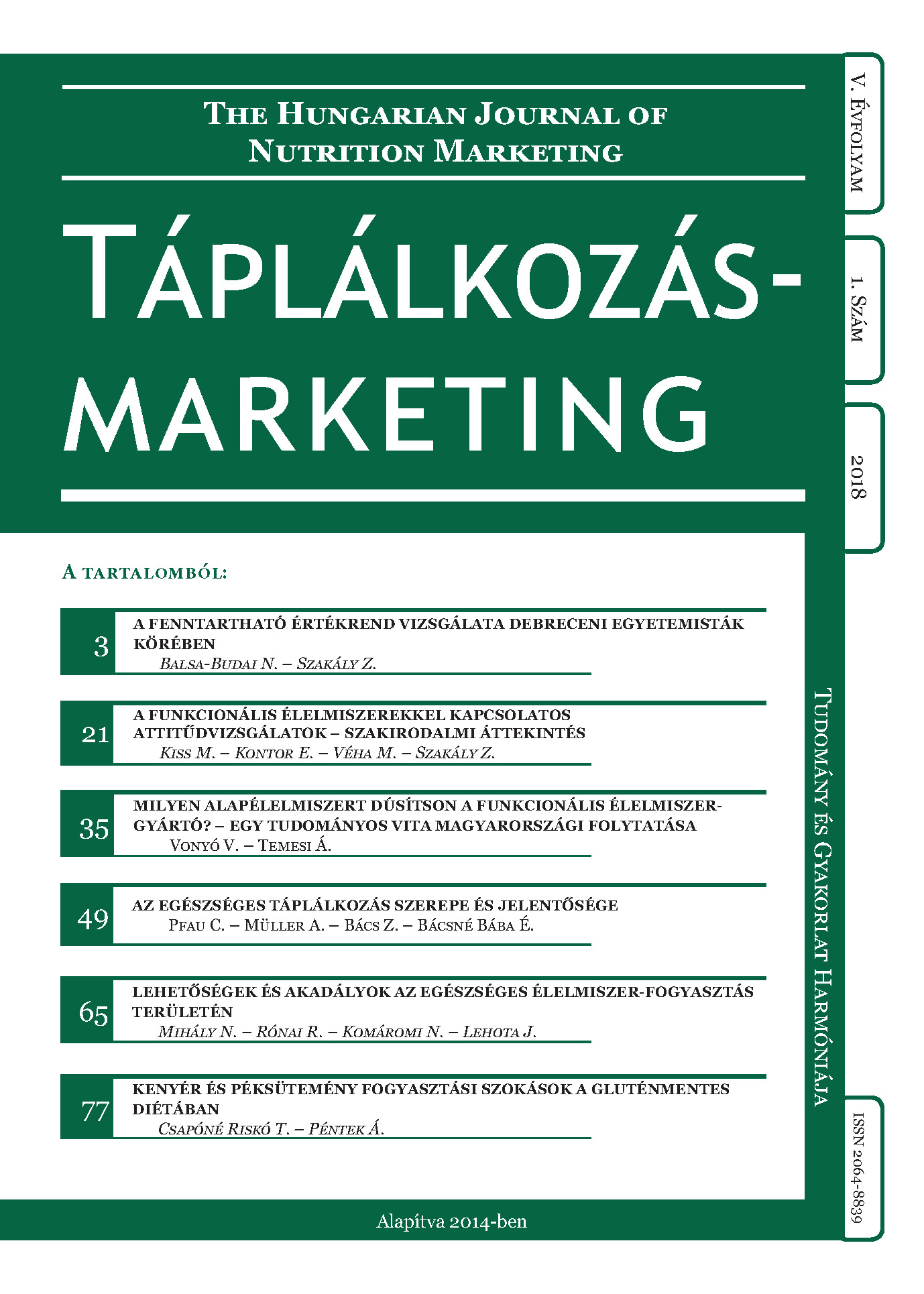Bread and Baked Goods Consumption Habits in the Gluten Free Diet
Authors
View
Keywords
License

This work is licensed under a Creative Commons Attribution-NoDerivatives 4.0 International License.
How To Cite
Abstract
Celiac disease is a genetic autoimmune disorder which is the result of an immune system response to the ingestion of gluten in susceptible persons. Gluten is a generalised term that describes the storage proteins found in the common cereal grains: wheat, rye, barley and their derivatives. This disease is permanent and damage to the small intestine always occurs when gluten is consumed, regardless of whether symptoms are present or not. Celiac disease affects about 1 in 100 individuals worldwide. In Hungary 1-2 percent of the population is affected. The only treatment for people with celiac disease is lifelong adherence to a gluten-free diet. On a gluten-free diet, wheat, rye, barley and any foods or ingredients derived from them must be removed from the diet. Bread is basic and frequently consumed food made from wheat. Bread and salty and sweet baked goods are an essential part of the Hungarian eating habits. The market of gluten-free foods is continuously increasing worldwide. Among the reasons behind this trend the increasing number of diagnosed persons, their family members (with whom they eat together), healthy lifestyle and fashion lifestyle have to be pointed out. Several gluten-free bread and baked goods brands are available on the Hungarian market. The ingredients, texture, colour, softness of the available breads and baked goods are rather different. There is a big choice of gluten-free flour mixtures on the Hungarian market, as well. The compositions of these mixtures are also rather different. The aim of our empirical research was to investigate the gluten free bread and baked goods consumption habits of people following gluten-free diet.
JEL codes: I12, M31


 https://doi.org/10.20494/TM/5/1/6
https://doi.org/10.20494/TM/5/1/6





